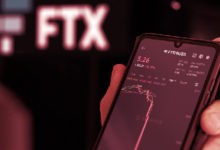Binance Tackles FUD, Dispels Liquidity Concerns in Blog Post

Binance, the world’s largest cryptocurrency exchange platform, has hit back at critics it claims have spread fear, uncertainty, and doubt (FUD) over its operations in a recent blog post.
In the post, it addressed seven key issues as it remains under severe scrutiny due to what it states are accusers that would like to see the exchange fail.
It aimed to firstly explain concerns over the stablecoin USD Coin (USDC), which was suspended earlier in December. A spokesperson from Binance said it wanted to consolidate all stablecoins to the ones with the most liquidity, including its native Binance USD (BUSD).
It also responded to claims it did not have sufficient liquidity to allow users to continue withdrawals.
According to the Chinese firm, Binance kept sufficient reserves between 12 and 14 December, with net withdrawals topping $6 billion at the time.
In a subsequent audit, CryptoQuant later confirmed Binance reserves were roughly 99 percent accurate. The latter confirmed it had entered talks with firms to provide services to verify reserves, adding that the world’s Big Four—Deloitte, KPMG, Ernst and Young (EY), and PricewaterhouseCoopers (PwC)–could not properly audit encrypted company reserves.
According to Binance’s fourth counterpoint, it addressed why it provided just Bitcoin (BTC) verification, stating it “takes the most cautious attitude towards” work involving user assets.
Due to the massive number of currencies, volumes, teams, and reserves needed to conduct verification processes, it needed to carefully conduct such verifications. The company added it did not have to disclose financial information as it was a private firm.
It also added: “Binance does not need to disclose detailed financial status for two reasons: First, listed companies must disclose company financial details to their investors, but Binance is a private company, not a listed company; second, Binance is financially healthy [and] self-sufficient, [has] no external financing needs and external investors, and no intention to go public at this stage.”
Citing a Reuters report, it stated in its sixth counterargument that mainstream media sources stated “ambiguities” and accused readers of only seeing “eye-catching headlines.”
It assured that it had the world’s largest number of approvals and licences, and aimed to tackle crime, responding to over 47,000 requests from law enforcement agencies since last year.
2 “FTX was killed by xyz (ie, a 3rd party)”
No, FTX killed themselves (and their users) because they stole billions of dollars of user funds. Period.
— CZ ? Binance (@cz_binance) December 6, 2022
Concluding, Binance hit back at firms claiming it had “destroyed FTX,” stating the latter had “destroyed itself” due to misappropriation of user assets, citing a 6 December tweet from company chief executive Changpeng Zhao (CZ).
It said: Binance will not regard other exchanges as ‘competitors’. The current industry touches less than 6% of the population. We are more focused on continuously promoting and expanding industry adoption. We also hope to see more exchanges, blockchain, Wallet, etc. coexist in this ecosystem, so that more people can enter the field of blockchain cryptocurrency, without spending time and resources on any unhealthy ‘competition’ within the existing scope.”






 Bitcoin
Bitcoin  Ethereum
Ethereum  Tether
Tether  USDC
USDC  TRON
TRON  Dogecoin
Dogecoin  Cardano
Cardano  Bitcoin Cash
Bitcoin Cash  Chainlink
Chainlink  LEO Token
LEO Token  Stellar
Stellar  Zcash
Zcash  Monero
Monero  Litecoin
Litecoin  Hedera
Hedera  Dai
Dai  Cronos
Cronos  OKB
OKB  Tether Gold
Tether Gold  Ethereum Classic
Ethereum Classic  KuCoin
KuCoin  Gate
Gate  Algorand
Algorand  Cosmos Hub
Cosmos Hub  VeChain
VeChain  Dash
Dash  Stacks
Stacks  Tezos
Tezos  TrueUSD
TrueUSD  IOTA
IOTA  Decred
Decred  Basic Attention
Basic Attention  Theta Network
Theta Network  NEO
NEO  Synthetix
Synthetix  Qtum
Qtum  Ravencoin
Ravencoin  0x Protocol
0x Protocol  DigiByte
DigiByte  Zilliqa
Zilliqa  Nano
Nano  Siacoin
Siacoin  Holo
Holo  Numeraire
Numeraire  Waves
Waves  Enjin Coin
Enjin Coin  Ontology
Ontology  Status
Status  Pax Dollar
Pax Dollar  BUSD
BUSD  Hive
Hive  Lisk
Lisk  Steem
Steem  Huobi
Huobi  NEM
NEM  OMG Network
OMG Network  Augur
Augur  Bitcoin Gold
Bitcoin Gold  Ren
Ren